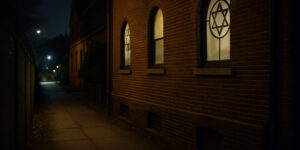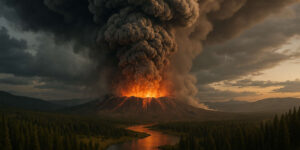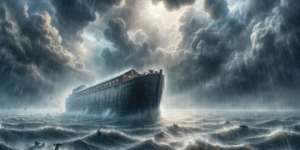‘Fury’ Depicts Blistering Account of World War II, Sans the Holocaust
Going into a World War II film, audiences expect to see 70-year-old battle scenes play out on the big screen; sometimes in gory detail.
The war in David Ayer’s latest film, “Fury,” is no different—except that it serves as more of a character study and a piece of historical fiction, much like “Saving Private Ryan,” to which it’s already being compared.
“Fury” follows the crew of an M4A3E8 Sherman tank in Germany in April 1945, toward the end of the European Theatre of the war. The tank, named “Fury” after the painted name on its gun barrel, becomes the new home of Private Norman Ellison (Logan Lerman), a clerical typist sent to the wrong part of the front. He joins up with Staff Sergeant Don Collier (Brad Pitt), Corporal Trini Garcia (Michael Peña), PFC Grady Travis (Jon Bernthal), and Technician 5th Grade Boyd Swan (Shia LaBeouf), a rough crew that’s been together since fighting in the North African Campaign.
They lost Red, one of their front gunners, so Ellison is roped in to take his place after confronting the first of many horrors of war—the viscera of former comrades inside the tank. Collier privately struggles with the loss of Red, and he brings Ellison under his wing as Fury rolls across Germany, forcing him to be subjected to difficult situations such as cowardly killing a German soldier. This pushes him to an emotional breaking point.
From a production standpoint, “Fury” is historically accurate, going as far as using a restored Sherman tank and a restored Tiger I tank in the film. The costuming and uniforms fit the period.
The cast is surprisingly good—even Shia LaBeouf—and they sink into their trope-like roles, most notably Bernthal as the jingoistic and rude Southerner. But what detracts from the film, apart from the darker side of war, is the lack of a Jewish connection. The core cast is the largest Jewish cast ever assembled for a World War II film, but the film itself doesn’t touch on the Holocaust.
Concentration camp liberations took place in different parts of Germany than those traveled by the Fury tank, and by placing that tank in the middle of such liberations, the film would have irked those viewers who strive for accuracy. Yet the film’s need to be historically sound when it comes to the tank’s journey comes at a major cost—omitting the brunt of the Holocaust from World War II.
As for the members of the cast, the only religion whispered is Christianity, as Boyd (nicknamed Bible) occasionally gives last rites to fallen soldiers. The Jewish background of LaBeouf, Lerman, Bernthal, and Jason Isaacs (appearing in a minor role as a captain) doesn’t carry through to their characters.
Additionally, the colors of the tracer rounds detract from the viewing experience. The red and green ammunition volleying back and forth during the battle scenes recall laser gun battles from science-fiction films of yore, even if they are meant to delineate between the Allies and the German forces.
“Fury” is a blistering war film at its heart. It’s masculine, unflinching, and uncomfortable to watch at times—in line with the nature of war—but focuses on just a small part of the larger picture of World War II.
For the original article, visit jns.org.







































